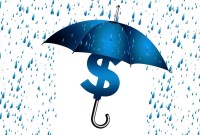- Home
- Business Processes
- Industry Knowledge
- Aerospace Industry
- Automotive Industry
- Banking Domain
- BFSI Industry
- Consumer/ FMCG Industry
- Chemicals Industry
- Engineering & Construction
- Energy Industry
- Education Domain
- Finance Domain
- Hospitality Domain
- Healthcare Industry
- Insurance Domain
- Retail Industry
- Travel and Tourism Domain
- Telecom Industry
- Leadership Skills
- eLearning
- Home
- Business Processes
- General Ledger (Record to Report)
- Defining Organizational Hierarchies
Defining Organizational Hierarchies
A hierarchy is an ordered series of related objects. You can relate hierarchy with “pyramid” - where each step of the pyramid is subordinate to the one above it. One can use drill up or down to perform multi-dimensional analysis with a hierarchy. Multi-dimensional analysis uses dimension objects organized in a meaningful order and allows users to observe data from various viewpoints.
Meaning of Hierarchies
A hierarchy is an ordered series of related objects. You can relate hierarchy with “pyramid” - where each step of the pyramid is subordinate to the one above it. One can use drill up or down to perform multi-dimensional analysis with a hierarchy. Multi-dimensional analysis uses dimension objects organized in a meaningful order and allows users to observe data from various viewpoints. These hierarchies need to be mapped to systems to ensure they are capturing the relevant business process information at relevant nodes to provide meaningful information for internal and external reporting.
Example
The account hierarchy allows you to map complex organizational structures of a business partner (for example, buying group, co-operative or chain of retail outlets). When you create a hierarchy structure, you form groups of business partners (for example, for purchasing groups). You can use them for statistical purposes and for marketing and accounting and other meaningful analyses.
Organizational hierarchies
Organizational hierarchies represent the relationships between the units/segments that make up your business.
Larger organizations may require some hierarchies that are based on business units and other hierarchies that are based on shared services, such as human resources and IT. They need to create cost centers in shared service departments and position them under business units, so that the costs of shared services are appropriately allocated. Now we will explore some examples of reporting needs arising out of these different hierarchies and dimensions. Any how they add complexity at transactional level to record relevant information appropriately.
Some areas where we need to deal with dimensions/hierarchies are:
Legal Structure
- Legal Entities
- Subsidiaries
- Tax Entities
- Statutory Entities
Operational Structure
- Business Units/Management Entity
- Divisions/Departments
- Business Functions
- Business Support Functions
- Organization Support Functions
- Cost Centers
- Profit Centers
- Business Employee Hierarchy
- Business Area /Project Area/ Controlling Area/ Product Lines/Service Lines
- Countries/Geography/Locations
- Accounts/Sub Accounts
Importance of Hierarchies
Defining organizational hierarchies enable to view and report on your business from different perspectives. You set up a hierarchy of legal entities for tax, legal, regulatory or statutory reporting. Various Legal entities can enter into legal contracts and are required to prepare statements that report on their performance. While performing business activities we need to capture and classify transactions at legal entity level to be able to identify transactions that belong to a specific legal entity. Therefore, there exists a need to define boundary at legal entity level to enable data classification, consolidation, security and reporting at these entity levels.
Example
A large corporate may create a central mailroom to receive all invoices from its vendors for which it need to make payment. These invoices are raised on separate legal entities within the same corporate group, but mailed to a central processing center for accounting and payment. The shared service resource who is working on these invoices must specify in the Accounting System the different legal entities to ensure proper treatment of these transactions. The payments should be issued from the respective bank accounts belonging to the legal entity on which the invoice has been raised.
You can create a hierarchy for purchasing function to control purchasing policies, rules, and business processes.
Related Links
You May Also Like
-
Trial Balance in General Ledger
One of the greatest benefits of using a double-entry accounting system is the capability to generate a trial balance. What do we mean by trial balance? As the name suggests a trial balance is a report that must have its debits equals to credits. Understand the importance of trial balance and why it is balanced. Learn how it is prepared and in which format.
-
GL - Accrued / Unbilled Revenue
Accrued revenues (also called accrued assets) are revenues already earned but not yet paid by the customer or posted to the general ledger. Understand what we mean by the terms accrued revenue, accrued assets, and unbilled revenue. Explore the business conditions that require recognition of accrued revenue in the books of accounts and some industries where this practice is prevalent.
-
GL - Different Type of Journals
Two basic types of journals exist: general and special. In this article, the learner will understand the meaning of journalizing and the steps required to create a journal entry. This article will also discuss the types of journals and will help you understand general journals & special journals. In the end, we will explain the impact of automated ERPs on the Journalizing Process.
-
Explore the concept of journal reversals and understand the business scenarios in which users may need to reverse the accounting entries that have been already entered into the system. Understand the common sources of errors resulting in the reversal of entries and learn how to correct them. Discuss the reversal of adjustment entries and the reversal functionalities in ERPs.
-
Multi Currency - Functional & Foriegn
Currency is the generally accepted form of money that is issued by a government and circulated within an economy. Accountants use different terms in the context of currency such as functional currency, accounting currency, foreign currency, and transactional currency. Are they the same or different and why we have so many terms? Read this article to learn currency concepts.
-
Network Organizational Structures
The newest, and most divergent, team structure is commonly known as a Network Structure (also called "lean" structure) has central, core functions that operate the strategic business. It outsources or subcontracts non-core functions. When an organization needs to control other organizations or agencies whose participation is essential to the success, a network structure is organized.
-
Funds contributed by owners in any business are different from all other types of funds. Equity is the residual value of the business enterprise that belongs to the owners or shareholders. The funds contributed by outsiders other than owners that are payable to them in the future. Liabilities are generally classified as Short Term (Current) and Long Term Liabilities. Current liabilities are debts payable within one year.
-
A Company (also called corporation) may be understood as an association of persons in which money is contributed by them, to carry on some business or undertaking. Persons who contribute the money are called the shareholders or the members of the company. A corporation is an artificial being, invisible, intangible and existing only in contemplation of law. Being the mere creature of law, it possesses only those properties which the charter of its creation confers upon it.
-
Legal Structures for Multinational Companies
A multinational company generally has offices and/or factories in different countries and a centralized head office where they coordinate global management. A multinational company (MNC)is a corporate organization that owns or controls the production of goods or services in at least one country other than its home country.
-
GL - Review & Approve Journals
Review and Approval mechanisms ensure that the accounting transaction is reasonable, necessary, and comply with applicable policies. Understand why we need review and approval processes, what are they, and how they are performed in automated general ledger systems. Learn the benefits of having journal approval mechanisms in place.
Explore Our Free Training Articles or
Sign Up to Start With Our eLearning Courses

About Us
Learning
© 2023 TechnoFunc, All Rights Reserved











